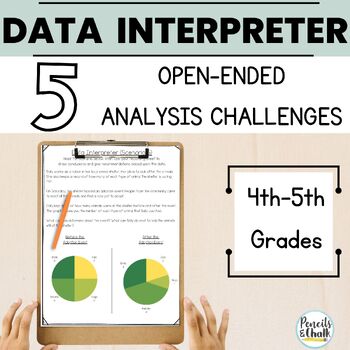Graphing and Data Analysis Worksheets - 4th & 5th Math Enrichment Activities
- Zip
Description
These data analysis worksheets will help your students learn how to read graphs, interpret data, and make decisions based on the data they see! These challenges are open-ended and allow students to develop problem-solving skills.
Challenge Description
Each challenge scenario contains a passage and graph. Students will read the passage, then look at the graph. They will then see if they can figure out why the data is saying what it is, and make their own suggestions to change or improve the scenario they read about.
Data analysis is a tricky skill to teach, but it can be TONS of fun! With this packet you will get:
- 5 unique data analysis scenario worksheets
- 4 variations of recording sheets to assist with differentiation
Due to the graphs included, I've included color and black/white options to meet all of your printing needs!
While this resource is intended to be open-ended, potential answers are provided to help guide your discussions with students.
Why Data Analysis?
Data analysis is a real-life skill that students will need to use! These scenarios ask students to examine WHY the data indicates what it does.
Then, they ask them WHAT they could recommend to the people in the scenarios to help them reach the desired outcome.
This not only helps them work on data analysis skills, but also critical and logical thinking skills.
These Data Analysis Challenges Are PERFECT For...
- Small group settings
- Whole class discussion
- Enrichment projects
- And more!
If you like these scenarios, you may also like my math enrichment packs that also have scenarios just like these included!
Math Enrichment Challenges for 2nd-3rd Grade
Math Enrichment Challenges for 4th-5th Grade
Please note: these challenges were designed with 4th and 5th graders in mind who need more of a challenge in math. Please view the thumbnails and preview prior to purchase to ensure these are at the right level for your students.
___________________________________
Copyright © Pencils & Chalk
Permission to copy for single family or classroom use only.
Please purchase additional licenses if you intend to share this product.





